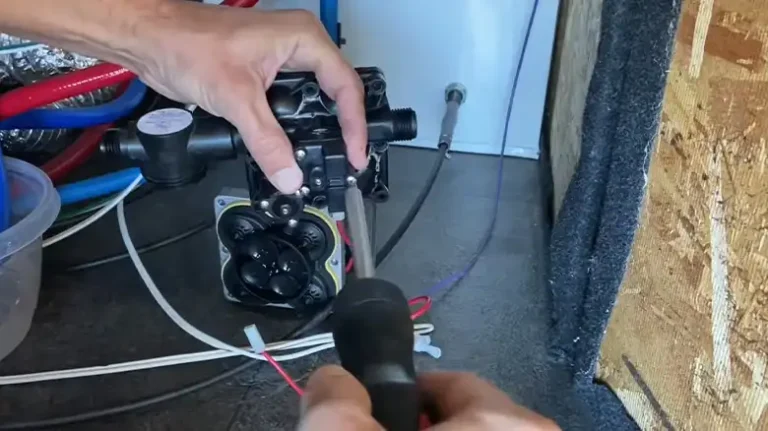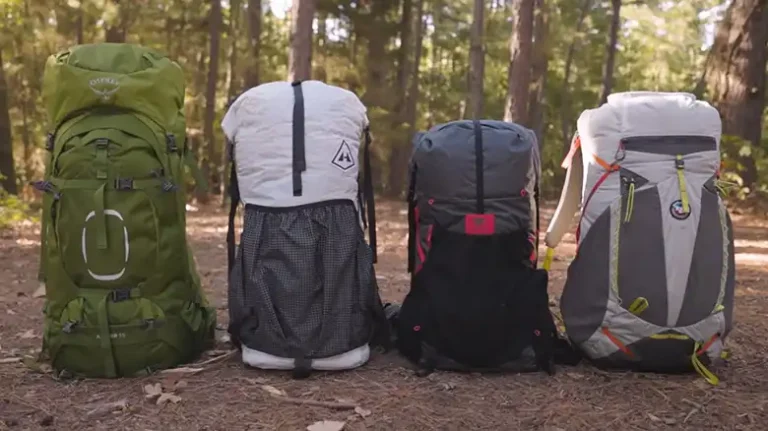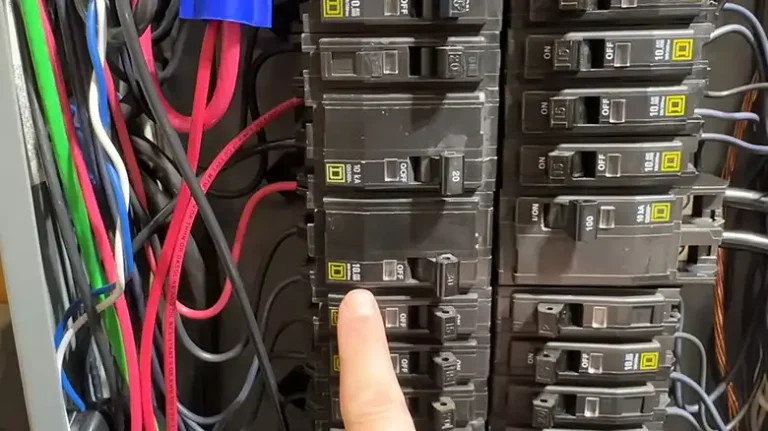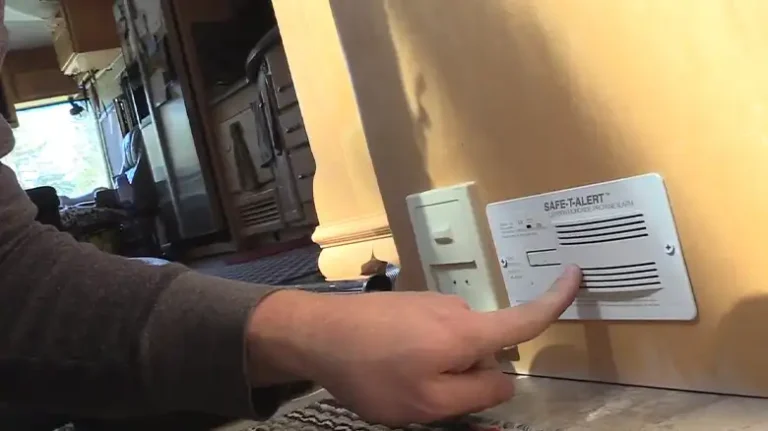Do Andersen Hitches Require Safety Chains?
Connecting a trailer to your tow vehicle properly is critical for safe towing. One key component is using safety chains as a secondary connection in case the main hitch fails. As many RVers do not use safety chains as some modern hitch designs like the Andersen Hitches utilize unique coupling methods, it raises questions about whether supplementary safety chains are still required.
In short – yes, Andersen Hitches still requires safety chains as a secondary retention system according to manufacturers’ guidelines and state laws. While the Andersen coupler has an integrated secondary locking mechanism, safety chains provide an additional failsafe that is legally mandated in most states.
I have provided an in-depth exploration of Andersen Hitch designs, why they still require safety chains, legal regulations around towing hitch systems, proper setup procedures, and pro tips for safely operating Andersen towing hitches with security chains. Whether you recently installed an Andersen hitch or are considering one, read on for everything you need to know about properly integrating safety chains.
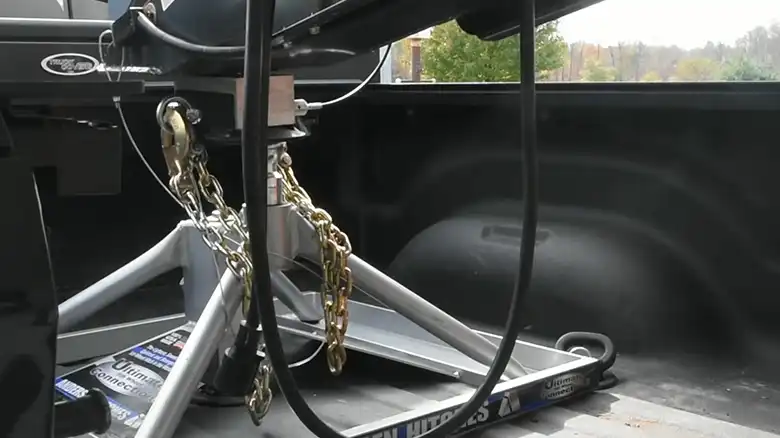
Do You Really Need Safety Chains for Do Andersen Hitches?
Founded in 2007, Andersen Hitches pioneered a unique weight distribution hitch system centered around their special Andersen coupler design. This coupler replaces the standard ball mount and provides an integrated weight distribution function through a specialized jaw-and-coupler connection.
Key advantages of the Andersen coupler include:
- Self-aligning hitch connection for easier trailer hookups
- Integrated sway control using friction Within the coupler jaws
- Weight distribution function Via coupler geometry and friction
- Auxiliary locking mechanism As a secondary coupler retention system
The proprietary Andersen hitch coupler utilizes a curved female bracket (the coupler) that drops overtop a specialized Andersen ball mount featuring a curved bracket as well. The coupler jaws clamp down around the ball mount bracket, creating substantial friction and leverage for both sway damping and weight distribution.
An integrated secondary locking system also clicks into place automatically to retain the coupler in case the main clamping force fails. This provides backup safety in lieu of traditional auxiliary chains.
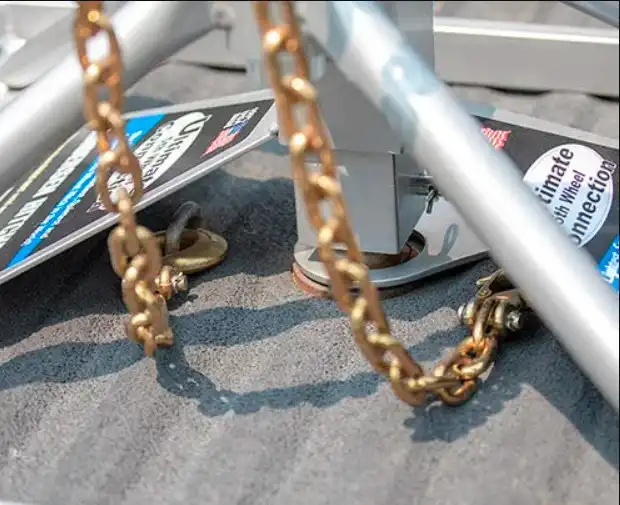
While this integrated secondary locking pin does provide an extra level of security, it does not negate the need for safety chains altogether.
Why Safety Chains Are Still Necessary for Andersen Couplers
According to Andersen’s own fitting instructions, owners must still attach safety chains while utilizing their specialized couplers. Chains are legally required as a secondary retention system in most states, providing an extra failsafe that permanently connects the tow vehicle and trailer.
If both the Andersen coupler and locking pin were to fail, properly connected safety chains would still retain the trailer to the tow vehicle. Chains prevent a fully detached trailer which can quickly turn into a dangerous road hazard for yourself and other drivers.
The most likely causes of a dual Andersen coupler failure include:
- Compromised frame or weld points
- Excessive cornering sway forces
- Missing or broken coupler components
- Wear from lack of lubrication/maintenance
While rare, even properly maintained Andersen hitches are still vulnerable to unpredictable failures, further highlighting the importance that redundancy through chains provides. Simply put, the security of a secondary mechanical locking mechanism is not robust enough to meet state laws or safety best practices.
State Laws and Regulations Around Towing Safety Chains
Before discussing proper safety chain setup, it’s important to understand the underlying hitch regulations across different states that mandate chains as compulsory supplementary retention systems.
Federal Regulations Are Minimal so Most Standards Are Set By Individual States
Unlike passenger vehicle safety standards which are governed primarily by centralized federal agencies like NHTSA, trailer hitch and towing equipment regulations are still left largely to individual states. Currently, 49 out of 50 states mandate safety chains anytime a trailer over a minimum weight is in tow. Specific regulations vary but nearly universally require backup chains.
Federal agencies like the DOT and NHTSA have outlined only basic performance standards for chains themselves and minimal voluntary guidelines around trailer braking systems. Compliance and enforcement duties are passed to individual state highway patrols and DMVs.
Key Towing Safety Chain Regulations By State
State chain requirements typically involve:
- Minimum trailer gross weight ratings requiring chains
- Minimum chain strength (i.e. max breaking strength)
- Mandatory crossed connection points
- Max chain lengths and amount of slack
- Approved connection types and hardware
- Regular inspection and maintenance
For example, Florida statutes mandate:
- Safety chains for trailers over 3000 lbs loaded weight
- Chains rated at the gross vehicle weight trailer rating
- Crossed chains with max 6” of slack
- Attachment points evenly distributed across the trailer width
- Chains repaired/replaced when stretched, damaged, worn
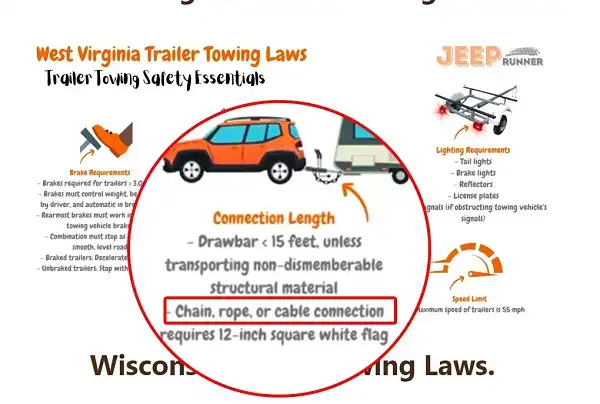
California’s laws specify similar specifications but call for dual chains rated at the tow vehicle hitch rating for gross trailer weights above 10,000 lbs.
Most states have adopted policies in line with best practice recommendations from the towing industry and trailer safety groups. However some less regulated states like South Dakota currently have no formal laws around trailer chains. However, all trailer manufacturers still advise using safety chains per industry standards.
The takeaway is that you should default to adding chains anytime you tow a trailer, no matter the state or hitch type. Andersen hitches are no exception to this recommendation.
Safety Tips to Setup Chain With Andersen Couplers Properly
Since chains are non-negotiable, how do you properly add them to an Andersen hitch system? Follow these key guidelines:
1. Use High-Quality Chains With Load Ratings Matched to the Tow Vehicle/Trailer Weight
Safety chains are only effective if they have sufficient strength to withstand towing forces should a trailer breakaway. Most states advised matching chain strength to either:
- The gross trailer weight rating (GTWR)
- The max tow rating of the tow vehicle
For heavy travel trailers with loaded weights approaching 10,000+ lbs, choose safety chains with a breaking strength of at least 14,000 lbs or higher. Using lower load-rated chains to save money is a false economy and risks failure when it counts. Go metal to metal with high-strength steel chains preferably 5/16” in diameter or larger.
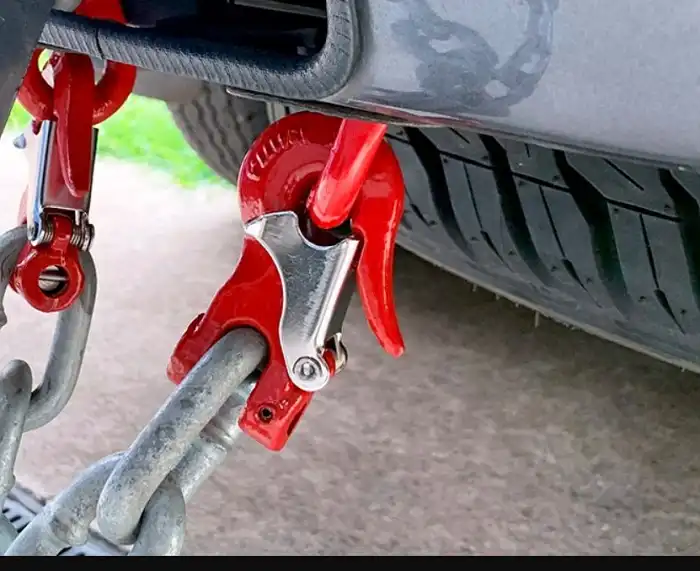
2. Connect Chains Using Correct Hardware to Solid Attachment Points
Mount chains using quality SAE-rated clevis slip hooks on one end and solid screw-closed hooks on the trailer end. Attach to dedicated safety chain connection tabs welded onto the trailer tongue frame, spaced evenly across its total width.
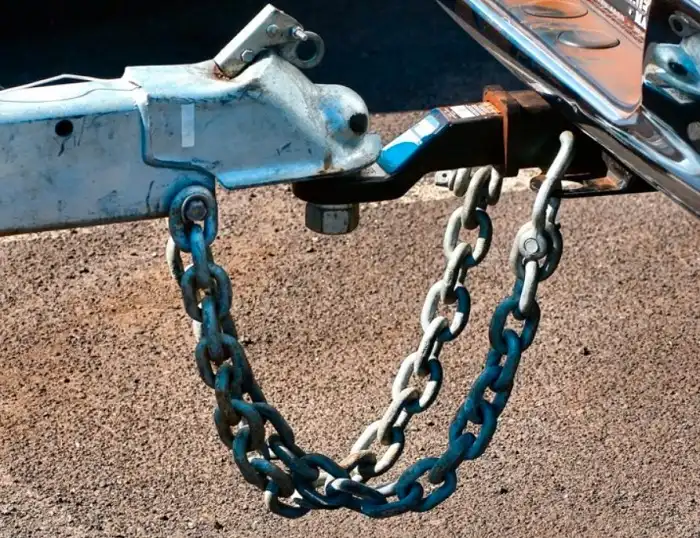
The goal is to distribute load forces evenly through primary structural members that can withstand a worst-case impact. Screw each hook tightly closed and secure slip hooks with pins/clips designed to prevent disengagement.
3. Cross Chains underneath the Coupler for Maximum Strength
Crisscrossing chains distribute forces more evenly if one chain goes taught under sudden loads. Feed each chain under the coupler bracket and outward towards opposite attachment points on the trailer frame. Keep some slight tension but allow enough slack for tight turns – most states advise leaving 6” or less of free chain movement.
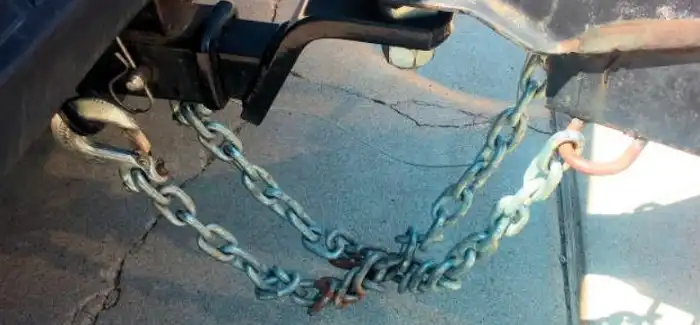
With quality chains installed using the right approach, you can have confidence in your backup connections. But never rely on safety chains alone during normal driving – they are called safety chains, not tow chains. Notice any signs chains are taking heavy loads by looking for link stretching and listening for odd noises as a sign of hitch trouble that requires immediate inspection.
Prioritize Regular Safety Checks and Maintenance
No towing system component lasts forever and even the best safety chains wear over time, slowly losing strength through fatigue damage. That’s why most states mandate regular visual and functional checks, typically advising to:
- Inspect for loose/compromised mounting hardware
- Check every link for damage cracks or signs of wear
- Measure/note any chain stretching which indicates replacement is due
- Confirm slip hooks can freely rotate and lock pins/clips are secure
- Replace damaged sections instead of the full chain to save cost
Catching chain wear early enough ensures they stay strong when it matters most. Also, apply lubricant to prevent rust-accelerated damage but avoid over-greasing which only attracts more road grime.
Following all the best practices for integrating safety chains is especially crucial given the heavy loads Andersen’s unique hitch coupler manages. Take a few extra minutes before each trip to confirm your entire hitch system is road-ready.
Conclusion
While Andersen’s proprietary No-Sway coupler offers integrated weight distribution, sway damping, and a secondary locking mechanism, supplementary safety chains are still legally required in 49 states. Chains provide inexpensive insurance against unpredictable dual hitch failures that could otherwise lead to a detached, runaway trailer. Even with a high-performance hitch design, a set of properly.


